07_10_vl_group12
Closest to a group photo we have for this trip.
Closest to a group photo we have for this trip.
Collecting along the shoreline.
The current drought brought us to a favourite site in the Conasauga formation in Cherokee County, hoping that low water levels would have exposed more finds. Unfortunately, it proved to be a double-edge sword in that, while more shoreline was exposed, with the lack of water washing the rocks, the trilobite pickin's were slim, indeed. However, our first stop was at a Dresdachian stage site which produced a bumper crop of brooksella, so, win some, lose some. Stop 2 was an Albertan stage site where a few really nice trilobite finds kind of made up for the scarcity. All enjoyed the nice weather and the halloween cupcakes. We had fun welcoming young Liz to the club. She found some fossils, dug up some clay and practiced her rock-skipping skills and had a ball. We finished up at a favourite restaurant where some of the best fried green tomatoes in Alabama can be found. Yum.
After the main trip, three members scouted a couple of potential new sites. The first site was totally non-productive, while the second site had a large outcropping of shale, where a few tiny trilobites were found.
--Photos courtesy Vicki Lais
Shoreline at stop number two where a few of us scouted for fossils, water is well below winter levels.
Interesting marks like these sometimes cover entire boulders in the area, probably attachment marks made by a snail-like creature. Probably recent, but in several million years they will be considered fossils.
Stop 1 was a late Cambrian site, Dresdachian stage, (515 MYA) which yielded a number of Brooksella.
Stop 2 was in the Albertan stage approx 530MYA. Thanks to Capt. Steve, a short boat trip to the collecting site yielded some good specimens of trilobites which appear to be Kingstonia, Densonella, Norwoodella, and Cossella.
The evening of the first day was spent at a local Seafood house followed by a delightful evening spent at a cabin rented by BPS. We celebrated Jan and Lea Novaks birthdays; Lea baked her own cake, a Czech trilobite cake, which was great. This was followed by much good drink, a spirited backgammon game, Pro football on the big screen TV (yes we were roughing it), more good drink, talk and blues on the radio.
Day 2 was another warm day for January starting with a good and inexpensive breakfast at the local fish camp. There was more fossil hunting on the local beach followed by several hours of splitting shale on another beach which was also fruitful. Later in the afternoon, a number of members decided to scout some new sites which we were told about by a local fossil hunter we met at our first stop.
(Photos courtesy Bill Fowler, Steve Corvin, and Vicki Lais)

Everyone is anticipating a great day of collecting!


Samples of the nice brooksellas that were found.

Lea and Claire surveying the area.
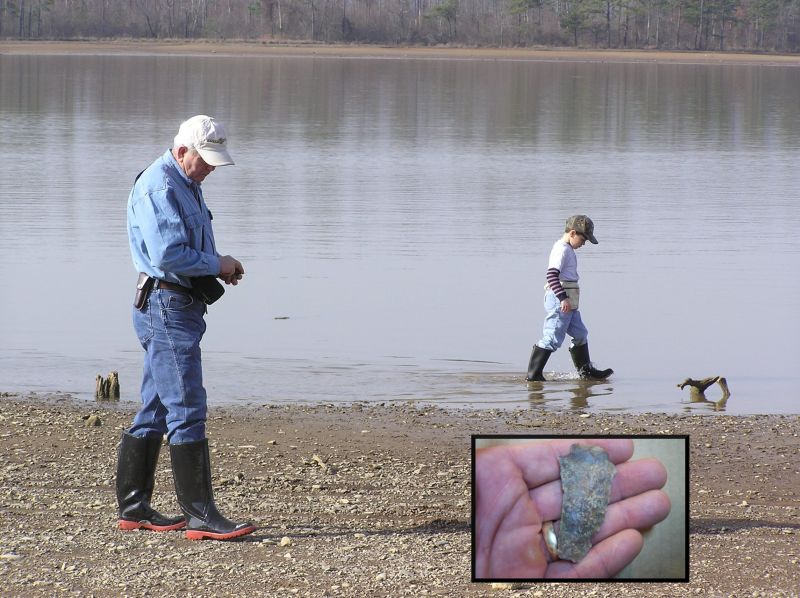
Steve found a nice point in the area.
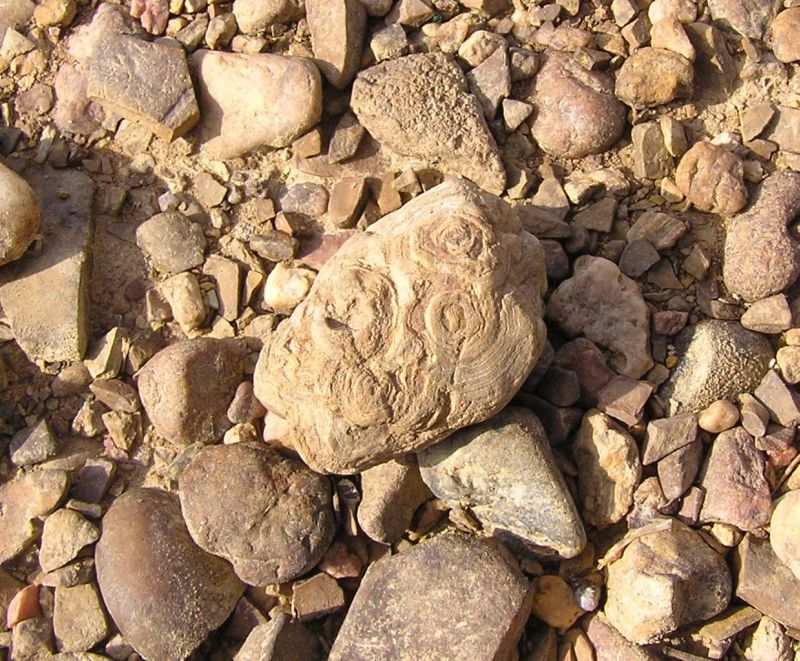
Nice stromatolite found by Vicki.

Bill and some of his small trilobite finds under the microscope. Click photo (then click photo) for larger image.

The next site required a short boat trip. The shoreline in this area is composed of deteriorated Conasauga shale.

Nancy found some nice (but decidedly muddy!) brooksella.

Steven with his trilobite find.
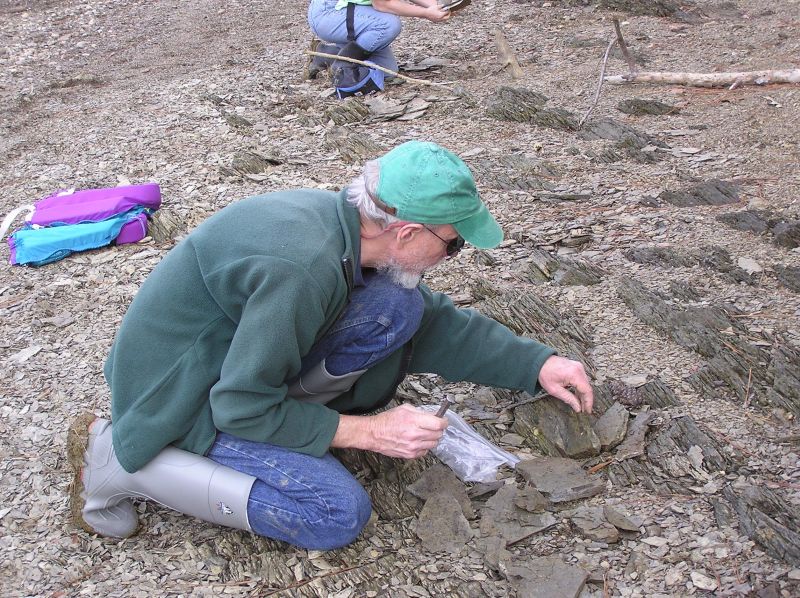
Searching for trilobites in the broken shale.
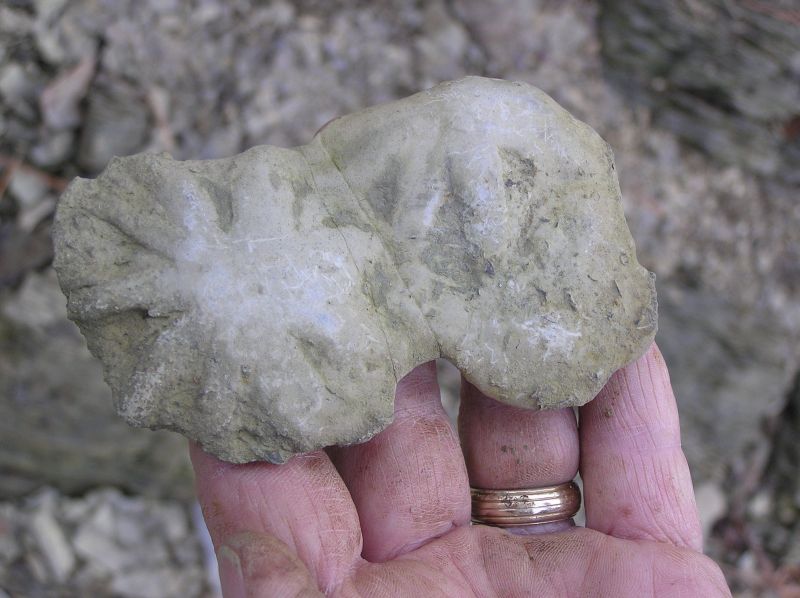
Bob found a double brooksella.

We learned the meaning of "don't leave any rock unturned" today . . .


Samples of what was found on day 1.
More trilobite specimens from day 1.
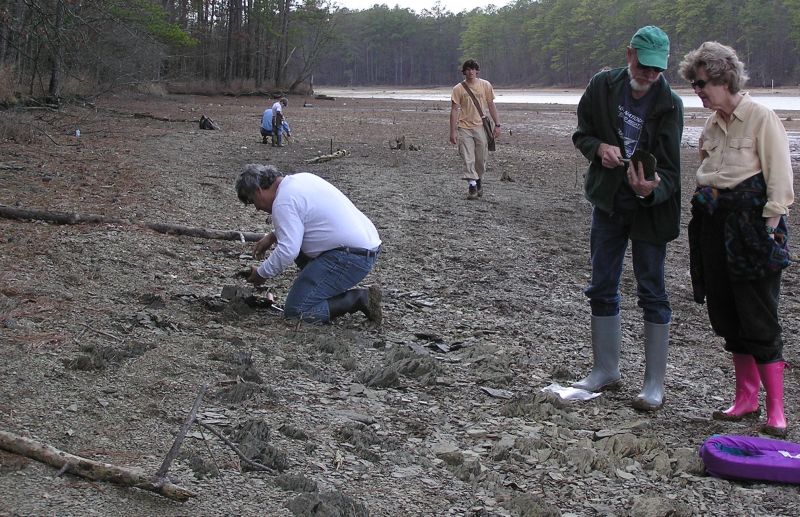
People were scattered all up and down the shoreline.
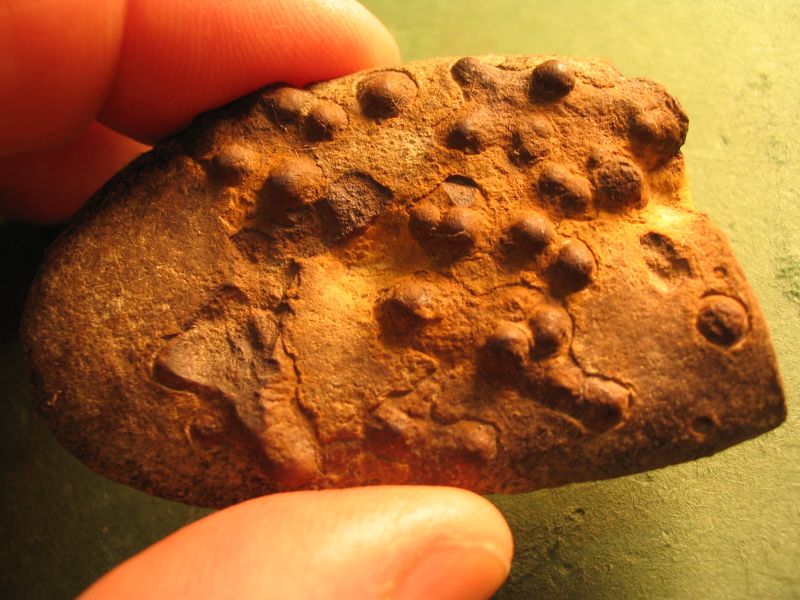
Another find by Bill, shown under the microscope.

A pebble filled with small trilobites, found by Bill.

Claire and her best finds of the day - very nice brooksella and trilobites.

Very nice trilobite found by Bobby.



On day 2 we collected at a different site. Large outcrops of Conasauga shale turned on edge held numerous trilobites.

Becky is extracting small hunks of the shale to carefully split apart.

Nice trilobite specimen found at this site, found by Pam and Bob.


Leisa was having very good luck splitting the shale.


